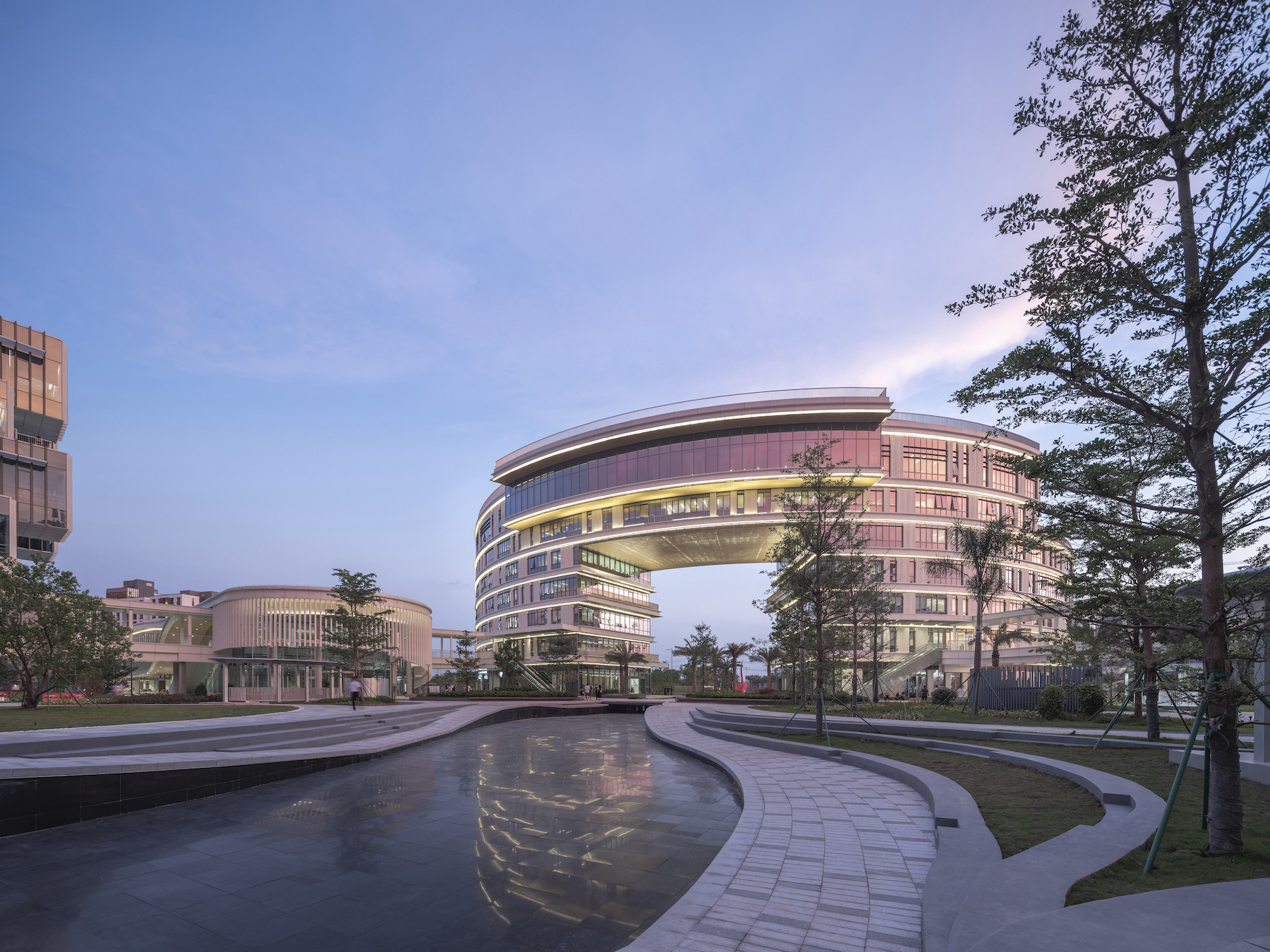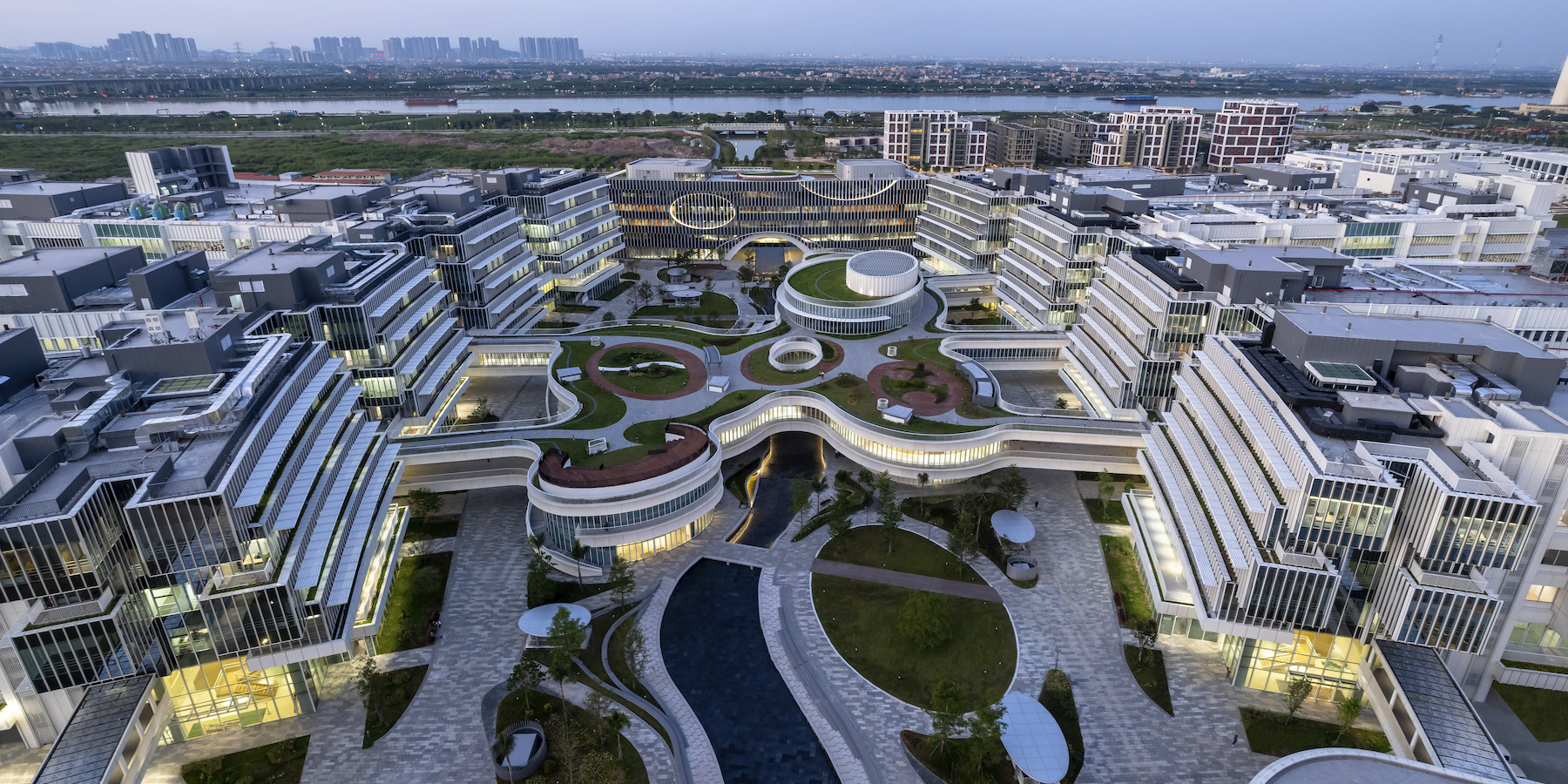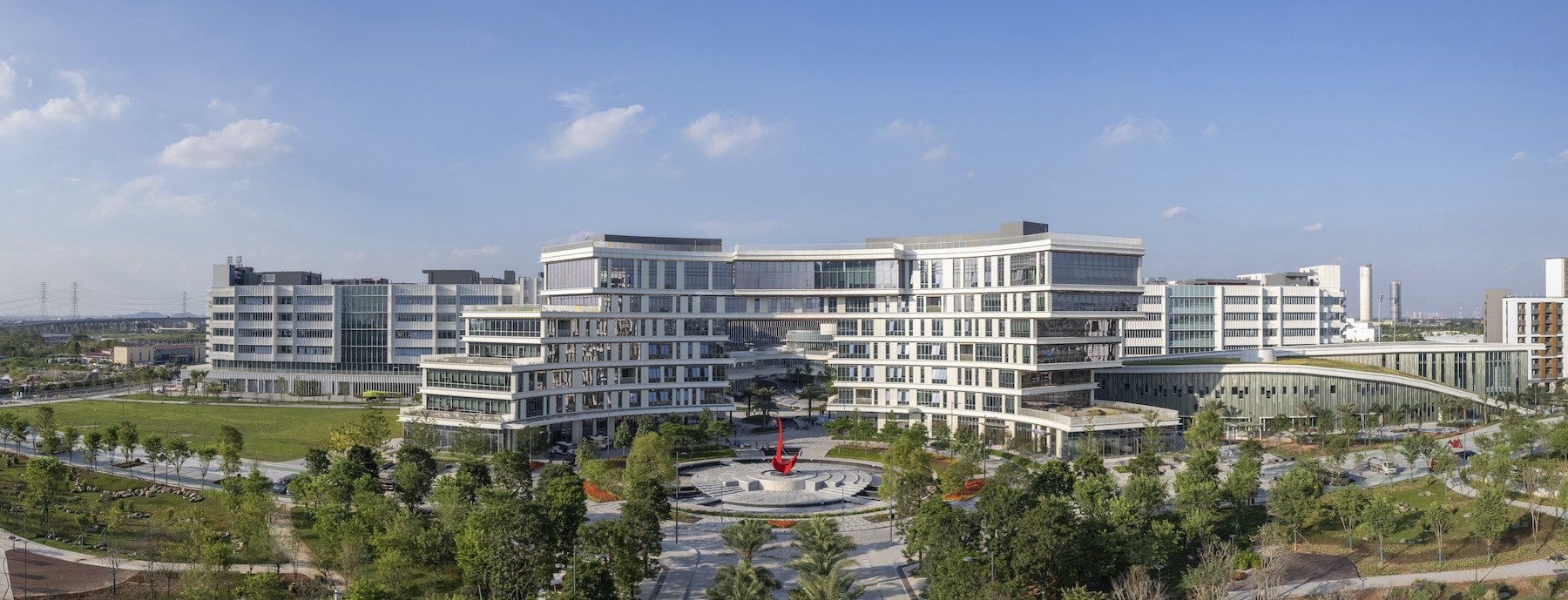In early September, the Hong Kong University of Science and Technology (HKUST) officially opened its new, KPF-designed campus in Nansha, Guangzhou (GZ). The carbon-neutral-ready campus was planned, designed, and built in three years’ time, with a project team comprising over 70 architects and planners across KPF offices in New York, Shanghai, Hong Kong, and Singapore.
The project’s first phase includes nearly 6 million square feet (about 550,000 square meters) for over 4,000 graduate students and 400 faculty members. It provides research facilities for subjects such as robotics and autonomous systems, smart manufacturing and transportation, microelectronics, and atmosphere and ocean systems.
Rather than following a traditional academic structure based on schools and disciplines, HKUST(GZ) centers around a project-based learning model that encourages multi-disciplinary interactions. The campus features eight research and lab buildings, connected by shaded arcades, and a full range of teaching spaces, including seminar classrooms, labs, large lecture halls, maker spaces, and collaborative workspaces.
“Landscape and building spaces come together to create an atmosphere where scientists will be energized and inspired to innovate,” James von Klemperer, KPF president, said in a statement.
From day one, HKUST(GZ) achieves a 54 percent reduction of carbon emissions, with a goal of reaching carbon neutrality before 2060. The plan’s environmental and resiliency measures have been designed for Guangzhou’s hot, humid climate and the rapidly urbanizing area’s flooding, seismic, and climate change risks.
When complete, the campus will accommodate more than 10,000 students and faculty. And it will integrate teaching and learning facilities with housing, neighborhood and campus retail, student life programs, administration, hotel, office and incubator spaces, and athletics facilities.
The HKUST(GZ) campus adds to KPF’s portfolio of research, innovation, and academic facilities around the world, including the CUNY Advanced Science Research Centers in New York City, the University of Michigan’s Detroit Center for Innovation, and NYU’s new Qiantan campus in Shanghai.
On the Building Team:
Owner: Hong Kong University of Science and Technology
Design architect: Kohn Pedersen Fox (KPF)
Architect of record: SCAD (Architectural Design & Research Institute of South China University of Technology Co.)
MEP engineer: ARUP
Structural engineer: ARUP
Landscape design: James Corner Field Operations
General contractor/construction manager: central hub: China Railway First Group Co. and China Railway Guangzhou Engineering Group Co.; other areas:
Canton One Construction Group Co. and Guangzhou Construction Engineering Co.


Related Stories
| Nov 3, 2014
An ancient former post office in Portland, Ore., provides an even older art college with a new home
About seven years ago, The Pacific Northwest College of Art, the oldest art college in Portland, was evaluating its master plan with an eye towards expanding and upgrading its campus facilities. A board member brought to the attention of the college a nearby 134,000-sf building that had once served as the city’s original post office.
| Oct 16, 2014
Perkins+Will white paper examines alternatives to flame retardant building materials
The white paper includes a list of 193 flame retardants, including 29 discovered in building and household products, 50 found in the indoor environment, and 33 in human blood, milk, and tissues.
| Oct 15, 2014
Harvard launches ‘design-centric’ center for green buildings and cities
The impetus behind Harvard's Center for Green Buildings and Cities is what the design school’s dean, Mohsen Mostafavi, describes as a “rapidly urbanizing global economy,” in which cities are building new structures “on a massive scale.”
| Oct 14, 2014
Proven 6-step approach to treating historic windows
This course provides step-by-step prescriptive advice to architects, engineers, and contractors on when it makes sense to repair or rehabilitate existing windows, and when they should advise their building owner clients to consider replacement.
| Oct 12, 2014
AIA 2030 commitment: Five years on, are we any closer to net-zero?
This year marks the fifth anniversary of the American Institute of Architects’ effort to have architecture firms voluntarily pledge net-zero energy design for all their buildings by 2030.
| Sep 24, 2014
Architecture billings see continued strength, led by institutional sector
On the heels of recording its strongest pace of growth since 2007, there continues to be an increasing level of demand for design services signaled in the latest Architecture Billings Index.
| Sep 22, 2014
4 keys to effective post-occupancy evaluations
Perkins+Will's Janice Barnes covers the four steps that designers should take to create POEs that provide design direction and measure design effectiveness.
| Sep 22, 2014
Sound selections: 12 great choices for ceilings and acoustical walls
From metal mesh panels to concealed-suspension ceilings, here's our roundup of the latest acoustical ceiling and wall products.
| Sep 17, 2014
New hub on campus: Where learning is headed and what it means for the college campus
It seems that the most recent buildings to pop up on college campuses are trying to do more than just support academics. They are acting as hubs for all sorts of on-campus activities, writes Gensler's David Broz.















